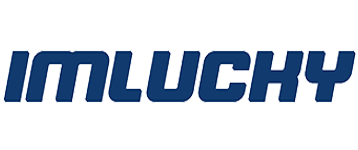Sådan fungerer e-belægningsprocessen og hvorfor den er mere effektiv
Videnskaben bag e-belægningslinjen: Elektroaflejring forklaret
Elektrobelægningslinjer fungerer gennem elektroaflejring, i bund og grund når metaldele bliver elektrisk opladet og tiltrækker malingpartikler med modsatte ladninger. Når dele føres ind i belægningstanken med vandbaseret maling, modtager de en negativ ladning, mens den omkringliggende opløsning bærer en positiv ladning. Det næste, der sker, er ret smart: denne opsætning genererer en elektromagnetisk effekt, som fordeler belægningen jævnt over overfladerne, ja, selv de besværlige kanter og sværtilgængelige steder. Og det bedste? Belægningen holder naturligt op med at vokse, når den når en tykkelse på cirka 15 til 25 mikron, hvilket betyder, at man slipper for de ujævne resultater, som ofte opstår ved traditionelle sprøjtemetoder.
Nøglefaser i E-lakeringsprocessen og udstyr anvendt i E-lakering
E-lakeringslinjens arbejdsgang består af fire kritiske faser:
- Forbehandling : Dele rengøres gennem affedtning, afspæling og fosfatering for at fjerne forureninger og sikre korrekt overfladehæftning.
- Lakeringsbad : Automatiserede transportbånd nedsænker forbehandlede komponenter i E-lakeringstanken, hvor elektroaflejring foregår under kontrolleret spænding.
- Rensning : Ultrafiltreringssystemer genvinder overskydende lakering, hvilket reducerer affald med op til 98 % sammenlignet med spraymetoder.
- Kurering : Infrarøde ovne bager lakeringen ved 160–200 °C og danner en kemisk tværforbundet overflade, som er meget modstandsdygtig mod skrælling og korrosion.
Rollen af forbehandling, hærdning og automatisering i E-lakeringslinjens effektivitet
God forbehandling fjerner urenheder, som kunne forstyrre, hvor godt elektricitet flyder gennem materialet, hvilket hjælper med at sikre, at belægningen dannes korrekt. Når vi hærdner belægningerne, styrker det faktisk de molekylære bindinger mellem lagene, så de varer betydeligt længere end almindelig maling, der blot tørrer i luften. Nogle undersøgelser viser, at belægninger kan vare fra 5 til 10 gange længere efter korrekt hærdning. De automatiserede systemer sikrer også meget præcis kontrol og holder spændingen inden for plus eller minus 2 volt, holder badevandstemperaturen stabil med omkring 1 grad Celsius forskel og styrer neddyppelsestiden med en nøjagtighed på inden for 3 sekunder. Dette reducerer fejl, som mennesker ellers kunne lave manuelt. Med indbyggede overvågningssystemer, der konstant justerer efter behov, sparer fabrikker mellem 18 og 22 procent i energiomkostninger, ifølge forskning offentliggjort i Journal of Coatings Technology tilbage i 2023. Denne præcision betyder, at produktionslinjer kan håndtere cirka 50 til 70 emner hver time og samtidig opretholde fejlprocenter under 1 procent i de fleste tilfælde.
Økonomisk Effektivitet: E-lakeringslinje vs. Traditionelle Lakeringsmetoder
Sammenligning af Driftsomkostninger: E-lakerings Effektivitet og Affaldsreduktion
E-lakeringslinjer opnår en materialeudnyttelseseffektivitet på 95 til 97 procent, hvilket er langt bedre end de almindelige 30 til 35 procent, der ses ved konventionelle spraylakeringsteknikker, ifølge sidste års branchestandarder. I praksis betyder dette markant mindre spildt materiale i form af overspray, og virksomheder kan reducere deres råvareforbrug med cirka 40 procent. Det giver direkte lavere omkostninger per produceret enhed. Traditionelle metoder kræver ofte flere lag for at opnå tilstrækkelig dækning, men e-lakering gør det rigtigt første gang med ens tykkelse over hele overfladen. Dette eliminerer behovet for reparationer og justeringer og sparer producenterne 15 til 20 procent i omkostninger forbundet med reparationer alene.
Arbejds- og Energi Besparelser med Automatiserede E-lakerings Systemer
Automatisering reducerer behovet for manuelt arbejde med 50–60 % sammenlignet med konventionelle sprayboder. Integrerede hærdningsovne bruger 30 % mindre energi end pulversprøjtningsopsætningerne på grund af optimerede hærdningscyklusser. Robothåndtering minimerer nedetid og gør det muligt for værksteder at behandle 25–30 % flere komponenter per vagt uden ekstra personale.
Langsigtet ROI-analyse: Økonomisk effektivitet af belægningsprocesser
Selvom den oprindelige investering i en e-belægningslinje er 20–25 % højere end ved traditionelle metoder, opnås breakeven typisk inden for 18–24 måneder på grund af vedholdende besparelser. Virksomheder rapporterer 50–70 % lavere årlige vedligeholdelsesomkostninger og en 35 % reduktion i gebyrer for deponering af farligt affald.
Case-studie: 40 % reduktion i belægningsomkostninger efter overgang til e-belægningslinje
En mellemstor producent af automotivedele sparede 220.000 USD årligt efter overgang til en e-belægningslinje. Automatiseret forbehandling og hærdning reducerede arbejdstimer med 65 %, mens materialeaffaldet faldt fra 12 % til 3 %. Systemet betalte sig selv tilbage på 16 måneder med projekterede besparelser over 10 år på 2,1 millioner $ baseret på driftsdata fra 2023.
Ingen eksterne links inkluderet på grund af mangel på autoritative kilder.
Holdbarhed og korrosionsbestandighed: E-belægning overgår maling og pulverlakering
Den elektrokemiske natur af e-belægning skaber en stærk atomforbindelse til metaloverflader, hvilket resulterer i ca. 98 % dækning, selv ved komplekse geometrier. Det er langt foran, hvad de fleste sprayteknikker kan levere, som typisk opnår omkring 85-90 %. Den jævne påføring hjælper med at forhindre de irriterende korrosionspletter i at danne sig i sårbare områder. Tredjepartstests viser, at disse belægninger holder i over 1.000 timer i saltspøjtestests i henhold til ASTM B117-standarder. For at sætte det i perspektiv, fejler almindelige væskemaler typisk mellem 400 og 600 timer, mens pulverlakering varer et sted mellem 750 og 900 timer, før der vises tegn på nedbrydning. Brancheeksperter peger ofte på denne holdbarhed som en af de vigtigste grunde til, at producenter skifter til e-belægning til kritiske komponenter.
Ved elektroforetisk migration danner harpiksdele en kontinuerlig barriere mod fugt, kemikalier og UV-degradering. Studier viser, at dele med e-belægning bevaret 92 % af deres beskyttende egenskaber efter 10 år i marine miljøer, sammenlignet med 68 % for pulverbelægning.
Anvendelse i bilindustrien og tung maskinindustri
Bilproducenter bruger e-belægning til at forhindre rust på chassis, og opnår en levetid, der er 40 % længere end for maling baseret på opløsningsmidler under vejsaltforhold. Producenter af udstyr til mining rapporterer 60 % færre korrosionsrelaterede fejl efter overgang til e-belægning, hvilket reducerer nedetid med 150 timer per maskine årligt.
Miljøfordele ved e-belægningslinjen sammenlignet med traditionelle metoder
Lav VOC-udledning og miljøvenlige fordele ved e-belægningslinjen
E-lakering bruger vandbaserede løsninger med op til 90 % færre flugtige organiske forbindelser (VOC'er) end opløsningsmiddelbaserede malingtyper. Målinger udført af tredjepart viser emissioner under 0,5 lbs/gallon – langt under intervallet 2,5–3,8 lbs/gallon for traditionelle spraylakeringsmetoder – hvilket gør e-lakeringsteknologien til et renere og mere sammenspurgt valg.
Affaldsreduktion og genbrugsevne i e-lakeringssystemer
Elektroaflejring opnår over 95 % malingoverførsels-effektivitet ved at binde lakeringen direkte til underlaget, hvilket markant reducerer oversprøjtning. Ubenuget materiale forbliver i badevæsken og kan genbruges, hvilket reducerer affaldsdannelse med 30–40 %. Lukkede vandrensningssystemer mindsker også vandforbruget; ledende bilfabrikker rapporterer 25 % lavere årlig vandforbrug efter overgangen til e-lakeringsprocesser.
Regulatoriske fordele og overholdelse af miljøpåvirkning ved e-lakering sammenlignet med andre metoder
E-belægning forenkler overholdelse af regler som EPA's NESHAP 6W og EU-direktiv 2010/75/EU på grund af dens lave emissionsprofil. Faciliteter undgår 85 % af godkendelsesudfordringer, der er forbundet med opløsningsmiddelbaserede systemer, og opfylder ISO 14001 bæredygtighedsstandarder 2,5 gange hurtigere end dem, der bruger pulver- eller malingmaler.
Udfordringer og implementeringsstrategier for at etablere en e-belægningslinje
Infrastrukturkrav for implementering af e-belægning i produktion
At skifte til en e-belægningslinje betyder at foretage nogle væsentlige ændringer af de eksisterende faciliteter. De fleste fabrikker opdager, at de har brug for cirka 25 % mere gulvplads sammenlignet med den, de havde til konventionelle processer. Den ekstra plads skal rumme alle de forbehandlings tanke, de store ensrettere og de specialiserede hærdeovne, der kræves for korrekt tørring. Det elektriske system skal også opgraderes, da det skal kunne håndtere mellem 200 og 400 volt jævnstrøm. Ventilationssystemerne er ikke kun vigtige for komfort, de skal også overholde streng OSHA-standarder med hensyn til opløsningsmidler i luften. Hvis man kigger på de reelle implementeringsomkostninger, går cirka 7 ud af hver 10 dollars udgifter til opsætning af de forbehandlingsområder med ting som fosfateringsanlæg, ifølge ny data fra FabTech (2023). Det gør klog planlægning absolut afgørende, når man afvejer de oprindelige udgifter mod de besparelser, der vil blive realiseret på længere sigt.
Træning, vedligeholdelse og nedetidsovervejelser for E-lakkeringslinje
Selvom automatisering reducerer arbejdskraftafhængighed med 40–60 %, kræves nye tekniske færdigheder. Vedligeholdelsesholdet skal trænes i membranfiltrering og tyristorretfærdiggørelse – almindelige årsager til uforudset nedetid i starten af adoptionen (Manufacturing Today 2023). Proaktive foranstaltninger såsom infrarøde forureningsfølere og planlagt vedligeholdelse uden for spidsbelastningstidspunkt hjælper med at opretholde 85–92 % driftsledighed.
Skalering af E-lakkering til små og store værksteder
For mindre værksteder under 5.000 kvadratfod er der modulære e-belægningsystemer på markedet, der kan håndtere filmtykkelse op til cirka 50 mikron. Disse systemer koster typisk omkring 60 procent mindre i forvejen sammenlignet med at installere fuldskala produktionslinjer. Når vi kigger på større automobilfremstillingsfaciliteter, så plejer de at få cirka 35 % bedre værdi for pengene ved at bruge de højhastighedsbånd, som kan transportere over 1.200 komponenter hver eneste time. Geometrien af dele er faktisk en af de største udfordringer her. De fleste problemer, når man skalerer op, skyldes at skulle håndtere uformede genstande, der simpelthen ikke passer til standardstativer uden en del tilpasningsarbejde.
Ved at afstemme facilitetsopgraderinger, medarbejdertræning og systemskalerbarhed med produktionsvolumen opnår producenter typisk fuld ROI inden for 18–24 måneder gennem reduceret materialeaffald og energiforbrug.
Ofte stillede spørgsmål
Hvad er e-belægning?
E-coating er en proces, hvor man ved hjælp af elektroafsætning påfører en belægning på ladede metaldele, hvilket sikrer en jævn fordeling og dækning, også i svært tilgængelige områder.
Hvordan sammenlignes e-coating med traditionel spraybelægning?
E-coating giver bedre materialeudnyttelseseffektivitet (95-97 %) sammenlignet med traditionel spraybelægning (30-35 %), reducerer affald og sikrer ensartet dækning, hvilket eliminerer behovet for touch-up.
Hvad er fordelene ved e-coating for miljøet?
E-coating har markant lavere VOC-emissioner og højere malingsoverførsels-effektivitet, hvilket gør det til et mere miljøvenligt valg end opløsningsmiddelbaserede malingemetoder.
Hvad kræver en infrastruktur for at etablere en e-coating-linje?
At etablere en e-coating-linje kræver typisk 25 % mere gulvplads, opgraderede elsystemer og ventilationssystemer. De største omkostninger er forbundet med at oprette forbehandlingsområder.







